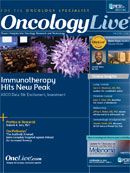Publication
Article
Oncology Live®
More Than 200 Agents in Blood Cancer Pipeline
Author(s):
The biopharmaceutical industry has 241 medicines in development for the treatment of leukemia, lymphoma, myeloma, and other blood cancers, which together are expected to comprise 9%, or 150,000, of new oncologic diagnoses in America this year.
Blood Cancer Agents in Development
The biopharmaceutical industry has 241 medicines in development for the treatment of leukemia, lymphoma, myeloma, and other blood cancers, which together are expected to comprise 9%, or 150,000, of new oncologic diagnoses in America this year, according to the Pharmaceutical Research and Manufacturers of America (PhRMA).
Of the drugs, 98 are designed to treat lymphoma, including the Hodgkin and non-Hodgkin types; 97 to treat leukemia; 52 to treat myeloma; 24 to treat hematological malignancies; 15 to treat myeloproliferative neoplasms, such as myelofibrosis, polycythemia vera, and essential thrombocythemia; and 15 to treat myelodysplastic syndromes.
“We have seen survival rates for many blood cancer patients doubled, tripled, and even quadrupled since the 1960s. But half of blood cancer patients still do not survive, so more research is needed to discover better therapies and help save more lives,” said Richard Winneker, PhD, senior vice president of research for the Leukemia and Lymphoma Society, in a statement.
Among the proposed treatments is a medicine for leukemia (midostaurin [PKC412], Novartis, phase III) that may block activation of the FLT-3 cell receptor that is mutated in about one-third of patients with acute myeloid leukemia.
Also being investigated is a medicine for leukemia and myeloma (TH-302, Threshold Pharmaceuticals, phase III) that consists of a toxic portion and an attached trigger molecule. The trigger molecule keeps the toxin inactive until the drug reaches the hypoxic region of the tumor, where it is then activated by the low oxygen concentration, killing the cells in its vicinity.
A potential first-in-class medicine for acute lymphoblastic leukemia (blinatumomab, Amgen, phase II) is an antibody designed to focus the body’s cell-destroying T-cells against cells expressing CD19, a protein found on the surface of B-cell-derived leukemia and lymphoma.
Also on deck is an oral version of an approved injectable DNA methyltransferase inhibitor for the treatment of myelodysplastic syndromes or other hematological malignancies (oral azacitidine, Celgene, phase II). The medication is designed to regulate the expression of tumor suppressor genes in order to stop the uncontrolled proliferation of malignant cells.
Overall, the design of personalized, or targeted, medicines is a rapidly growing area of interest for companies that develop drugs, with 94% of the firms in a recent survey reporting the inclusion of such agents in their pipelines, according to the PhRMA report.
“Research has brought new and improved treatment options to cancer patients, creating hope that didn’t exist before,” said John J. Castellani, PhRMA president and CEO. “Emerging scientific advances and knowledge are creating unprecedented opportunities for new therapeutic options.”










